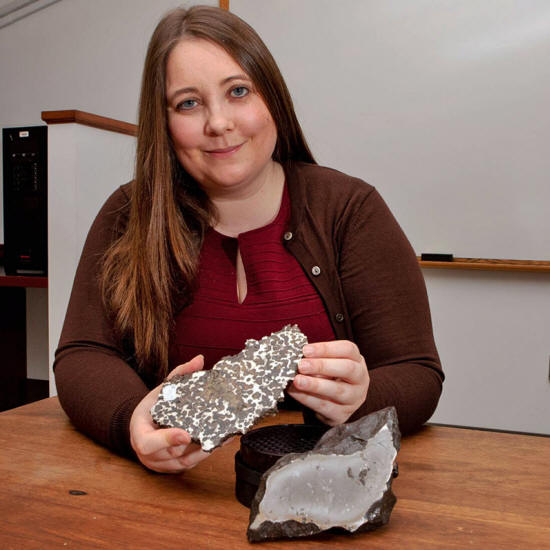|
Office
of Communications from PrincetonUniversity Website
worked with then-graduate student Wenbo Wu and another collaborator to determine the roughness at the top and bottom of the transition zone, a layer within the mantle, using scattered earthquake waves. They found that the top of the transition zone, a layer located 410 kilometers down, is mostly smooth, but the base of the transition zone, 660 km down, in some places is much rougher than the global surface average. "In other words, stronger topography than the Rocky Mountains or the Appalachians is present at the 660-km boundary," said Wu.
NOTE:
This graphic is not to scale. Office of Communications
Most schoolchildren learn that the Earth has three (or four) layers: a crust, mantle and core, which is sometimes subdivided into an inner and outer core. That's not wrong, but it does leave out several other layers that scientists have identified within the Earth,
including the
transition zone within the mantle.
(Lacking a formal name
for this layer, the researchers simply call it "the 660-km
boundary.")
Big earthquakes are vastly more powerful than small ones - energy increases 30-fold with every step up the Richter scale - and deep earthquakes,
She gets her best data from earthquakes that are magnitude 7.0 or higher, she said, as the shockwaves they send out in all directions can travel through the core to the other side of the planet - and back again.
For this study, the key data came from waves picked up after a magnitude 8.2 earthquake - the second-largest deep earthquake ever recorded - that shook Bolivia in 1994.
Seismologists and data
scientists use powerful computers, including Princeton's
Tiger supercomputer cluster, to
simulate the complicated behavior of scattering waves in the deep
Earth.
Just as light waves can bounce (reflect) off a mirror or bend (refract) when passing through a prism, earthquake waves travel straight through homogenous rocks but reflect or refract when they encounter any boundary or roughness.
The researchers were surprised by just how rough that boundary is - rougher than the surface layer that we all live on.
Their statistical model didn't allow for precise height determinations, but there's a chance that these mountains are bigger than anything on the surface of the Earth.
The roughness wasn't equally distributed, either; just as the crust's surface has smooth ocean floors and massive mountains, the 660-km boundary has rough areas and smooth patches.
The researchers also examined a layer 410 kilometers (255 miles) down, at the top of the mid-mantle "transition zone," and they did not find similar roughness.
Seismologist Jessica Irving, an assistant professor of geosciences, sits with two meteorites from Princeton University's collection that contain iron thought to come from the interiors of planetesimals. Irving uses seismology to investigate the interior of our own planet, recently finding mountain-sized topographic roughness on the 660-km boundary at the base of
the mantle's transition zone.
Office of Communications
What it means
That layer divides the mantle, which makes up about 84 percent of the Earth's volume, into its upper and lower sections.
For years, geoscientists have debated just how important that boundary is. In particular, they have investigated how heat travels through the mantle - whether hot rocks are carried smoothly from the core-mantle boundary (almost 2,000 miles down) all the way up to the top of the mantle, or whether that transfer is interrupted at this layer.
Some geochemical and mineralogical evidence suggests that the upper and lower mantle are chemically different, which supports the idea that the two sections don't mix thermally or physically.
Other observations suggest no chemical difference between the upper and lower mantle, leading some to argue for what's called a "well-mixed mantle," with both the upper and lower mantle participating in the same heat-transfer cycle.
Their data suggests that both groups might be partially right.
The smoother areas of the
660-km boundary could result from more thorough vertical mixing,
while the rougher, mountainous areas may have formed where the upper
and lower mantle don't mix as well.
But because of how heat
in transported within the mantle, Wu explained, any small-scale
thermal anomaly would be smoothed out within a few million years.
That leaves only chemical differences to explain the small-scale
roughness they found.
Scientists have long debated the fate of the slabs of sea floor that get pushed into the mantle at subduction zones, the collisions happening found all around the Pacific Ocean and elsewhere around the world.
Wu and Irving suggest that remnants of these slabs may now be just above or just below the 660-km boundary.
She added:
|



